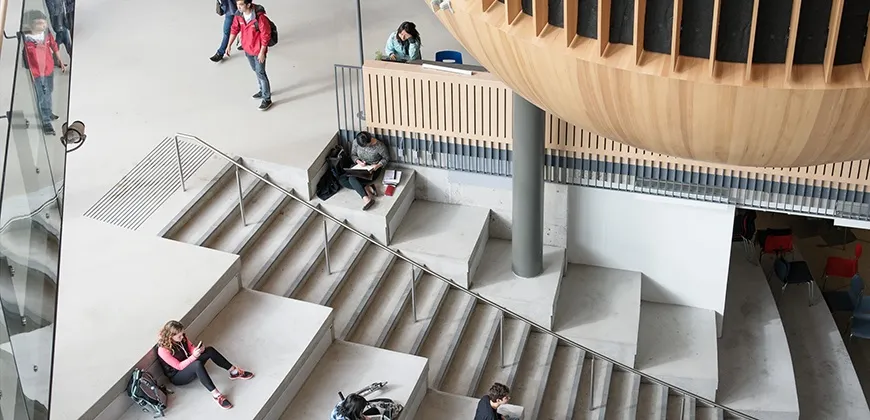Energy efficiency review
As part of his capstone project in the MEL in High Performance Buildings program, Chris Moore took on the challenge of improving the energy efficiency of a recently built LEED Gold building on the UBC campus.

Students in the Master of Engineering Leadership (MEL) in High Performance Buildings program work on two capstone projects, with the first asking them to propose options for greening an existing building. In 2020, this project focused on the Engineering Student Centre, a 907-square-metre two-storey wood-frame building completed in 2015.
“The student centre is very recent and was built to LEED Gold standards,” says MEL student Chris Moore. “We assumed that it would be performing well. Yet the energy data revealed just how much energy-efficiency expectations have increased in the last five years and that the building is not performing at what considered a modern limit by UBC’s Green Building Action Plan or certification systems like the BC Energy Step Code.”
Chris says that the capstone project was structured to mirror a typical industry scenario, with a client asking for a proposal on improving a building’s performance by outlining options, assessing their feasibility and recommending strategies. “This was a real-life application of the theory we’ve been learning,” he says. “It generated interesting in-class discussions about what’s happening in the field and the project felt grounded and relevant.”
Students used energy modelling software to explore the impact of potential upgrade investments. Chris looked at installing more energy-efficient windows with a U-value of 0.27 (compared to the original value of 0.41), increasing wall insulation and airtightness, replacing the building’s heating system with an on-site electric heat pump, switching to demand-control ventilation, installing solar panels and adding daylight sensors to reduce energy use from lighting.
He then chose the three options that would have the greatest impact on reducing thermal energy demand intensity and greenhouse gas emissions. Switching to a heat pump, upgrading the windows and introducing demand-control ventilation would reduce the building’s total energy use by 55 per cent and carbon emissions by 95 per cent. Chris says that while these upgrades would bring the performance of the Engineering Student Centre in line with the limits set in Vancouver’s green building policy for rezonings, it would still not meet the thermal energy demand intensity required to meet BC Energy Step Code, City of Vancouver or Passive House standards.
“This project shows just how hard it is to bring an existing building’s energy-efficiency performance to the level that is considered acceptable in a new high-performing building,” he says. “It really highlighted the challenge that if you don’t do it right the first time, you confront the limitations of retrofitting.”
In turn, he notes, that has implications for our ability to meet 2050 climate goals.
“It’s estimated that about 70 per cent of the buildings in our communities will still be around in 2050,” says Chris. “If we want to meet our climate goals, we’ll need to make significant investments in improving these buildings. That’s complicated because energy costs – such as for natural gas – are relatively cheap, so it’s hard to make a compelling business case. We’d need to start incorporating the real cost of carbon, but that is rarely factored into financial analyses.”
Now two-thirds of the way through the program, Chris says that the MEL’s combination of technical and business courses has made for a very relevant educational experience. “As professionals, we are applying technical solutions within a social and business context. That means we need to be able to clearly communicate the value of energy-efficiency to homeowners, building operators, governments and voters.”
Chris came to the program with a degree in mechanical engineering and years of experience in the marine industry. He saw the MEL as an exciting opportunity to gain the skills and credentials he’d need to address climate change and sustainability issues within the building industry. “I’m just one individual, but moving into this field will, I hope, enable me to make a small positive impact.”



